Jmix Tool Window
Jmix tool window is designed to represent significant elements of the project. It normally opens on the left side of the IDE. You can change the position of the tool window in the IDE, see IntelliJ IDEA documentation.
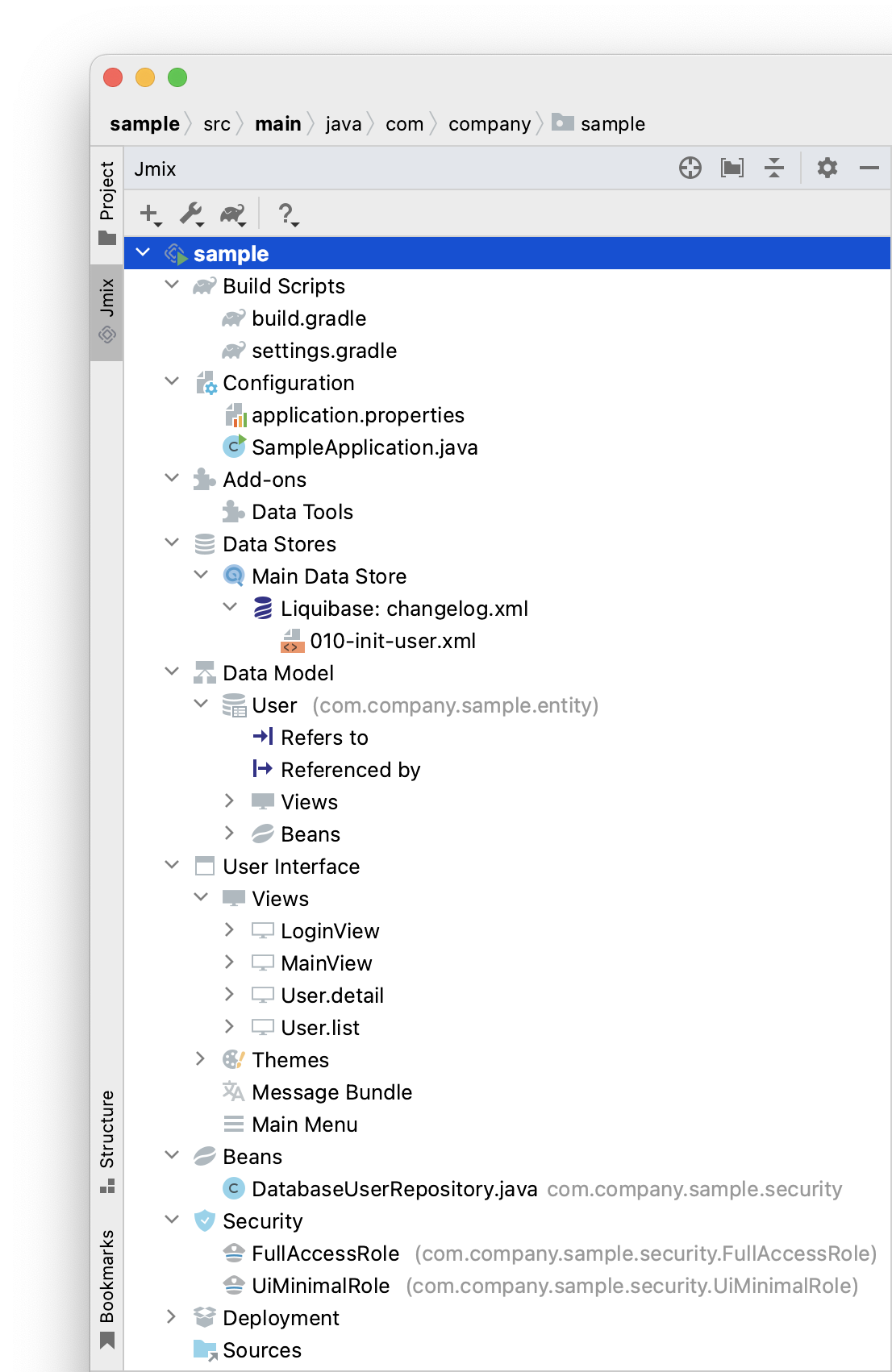
Sections
-
Build Scripts contains three main project scripts:
-
build.gradledefines the build configuration. -
settings.gradledefines the project name and the set of modules. -
gradle.propertiescontains configuration setting that disables the Hilla framework within the project.
-
-
Configuration includes application configuration files:
-
application.properties- defines database connection parameters, logging levels and other properties of the Spring Boot application. -
SampleSecurityConfigurationcomplements the standard security configurations provided by Jmix modules. You can configure custom API endpoint security by definingSecurityFilterChainbeans within this class. -
SampleApplication- the main application class of the project.
-
-
Add-ons displays the list of Jmix add-ons installed for the project. If you double-click on the Add-ons node, Studio will open a dialog window for managing add-ons in your project.
-
Data Stores displays and manages the list of data stores the project is connected to and their Liquibase changelogs. By default, there is only one Main data store.
In the new project, the HSQL relational database is used by default. It stores data in the
.jmix/hsqldbfolder of the project.Liquibase changelogs are XML files describing the database schema changes.
If you double-click on the Main Data Store node, you will see parameters of the database connection in a dialog window. These parameters are stored in the
application.propertiesfile. -
Data Model displays and manages the data model of the project. It contains entities and their related elements like UI views and beans.
There are subsections Refers to and Referenced by under every entity. They show dependencies between entities, embedded attributes, and inheritance relationships.
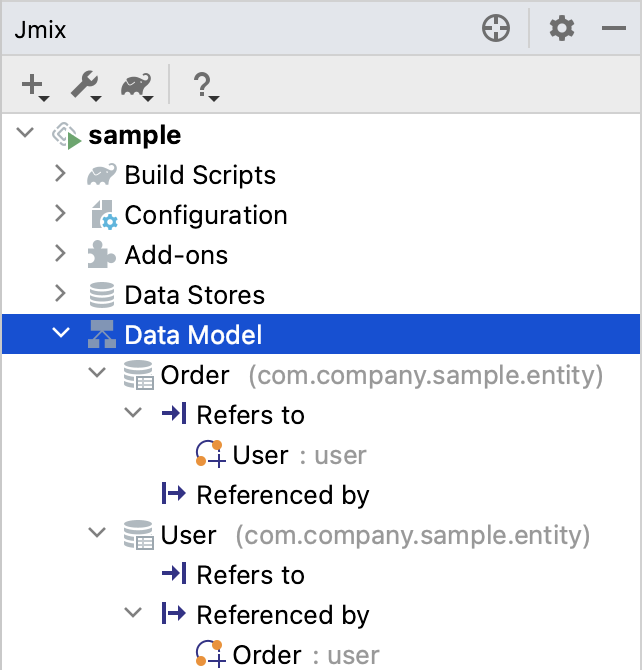
-
Refers to shows references to other entities.
-
Referenced by shows entities that have references to this entity.
These subsections help you to explore the data model and navigate to related entities by using the context menu and Jump to Source actions.
-
-
User Interface contains everything related to Jmix UI:
-
Views shows the controller and descriptor files of the UI views.
-
Themes contains CSS files of the application theme.
-
Message Bundle opens the message bundle of the application.
-
Main Menu opens the Menu Designer.
-
-
Beans displays Spring beans defined in the project.
-
Security contains security settings roles. The new project contains the
FullAccessRolewhich is assigned to theadminuser andUiMinimalRolewhich gives minimal permissions to users. -
Deployment lets you quickly deploy a containerized application to the cloud.
-
If you double-click on the Sources node, Studio will open the Project tool window with the usual view of the entire source code:

-
Double-click the Tests item opens the Project tree in the
src/test/javafolder.
Context Menu
Context menu allows you to create new elements. For example, right-clicking on the User Interface calls actions related to the views and themes of the user interface.
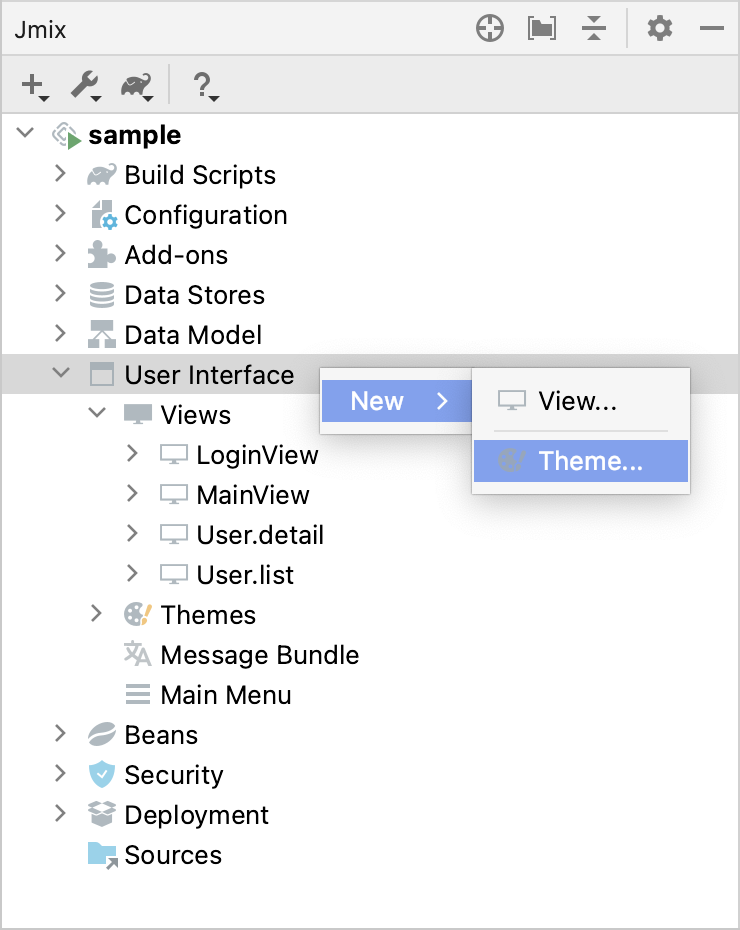
Toolbar
The toolbar provides quick access to commonly used actions and settings.
New
The New actions group is where you can create new project elements. For example, you can create new JPA Entity, or Additional Data Store, or other essential components.

Settings
This group of actions provides access to some project settings.
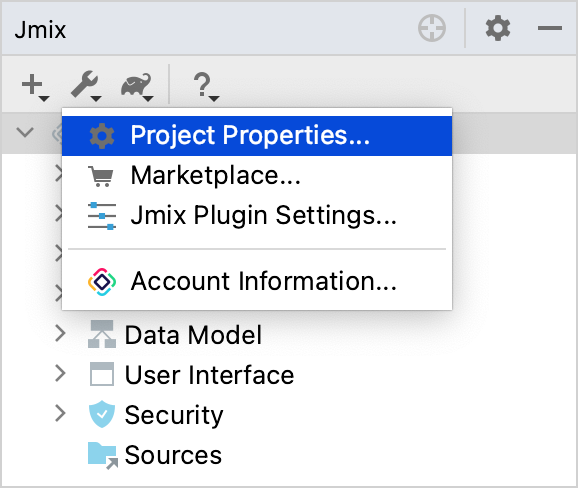
In the Project Properties editor, you can configure your project.
Marketplace action opens the Add-ons window, where you can manage add-ons included in your project.
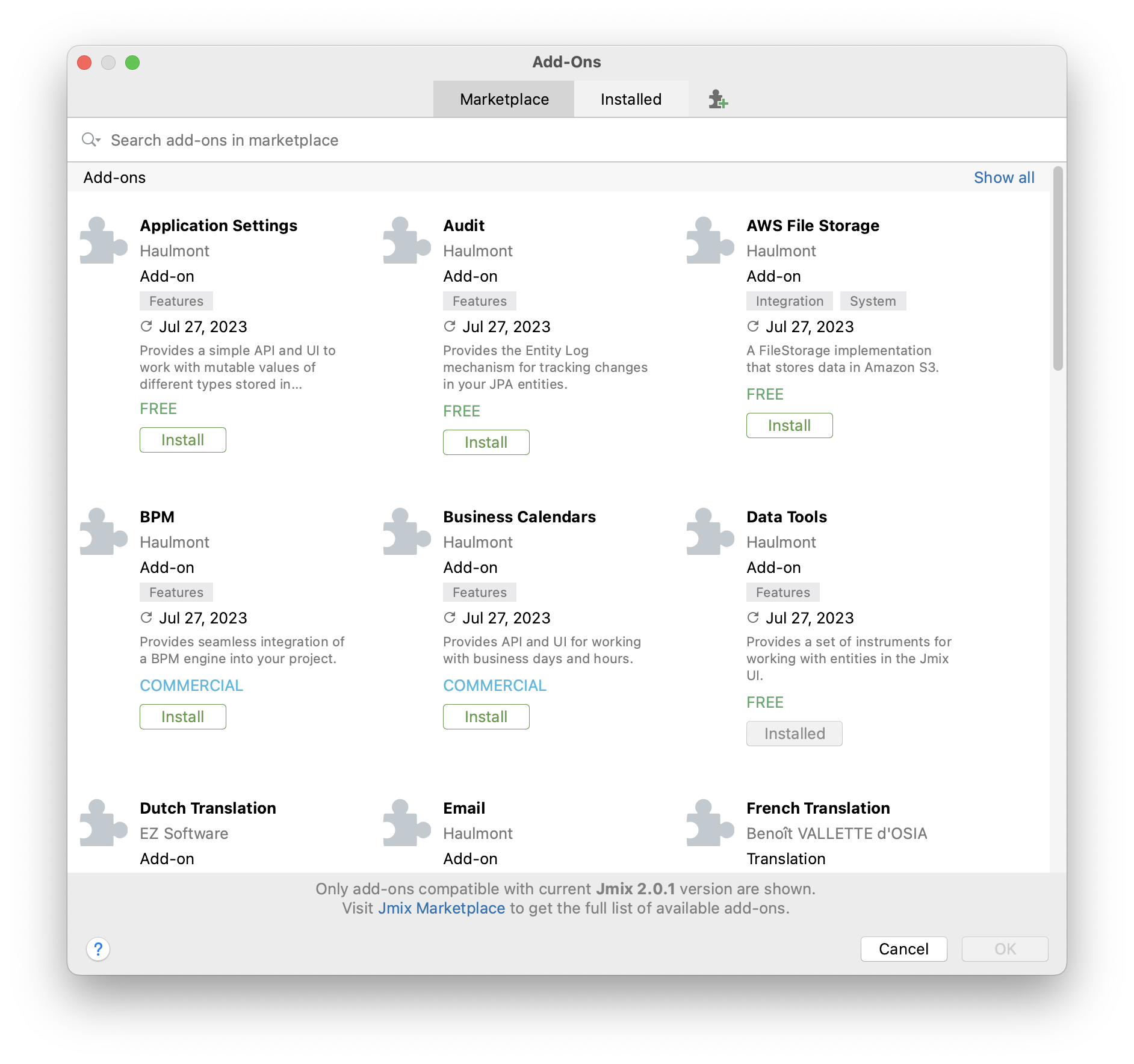
The Jmix Plugin Settings opens a dialog containing settings related to all projects opened in this Studio instance.
Account Information action opens the Jmix Subscription dialog where you can view details about your account and subscription.
Gradle
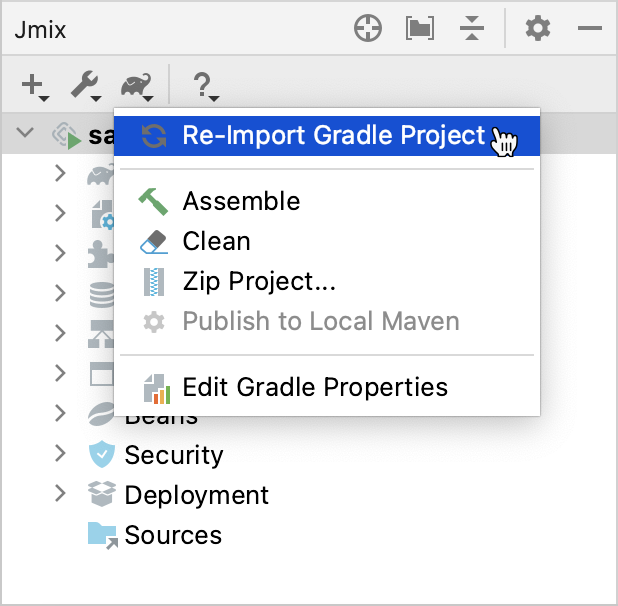
-
Re-Import Gradle Project runs Gradle project synchronization which is necessary for Studio functioning. Use this action if the automatic synchronization has failed, for example, due to network inaccessibility or invalid repository configuration.
Also, you should use this action to apply changes that you made manually in the
build.gradle,gradle.propertiesor in some other Gradle settings. -
Assemble and Clean run frequently used Gradle tasks:
assembleandclean. -
Zip Project opens a dialog for the
zipProjectGradle task that can be used for code sharing purposes. -
Edit Gradle Properties opens
~/.gradle/gradle.propertiesfile for editing.
Help

-
Use the built-in feedback form to share your thoughts on Jmix Studio – what you love, and what you think could be better. You can find it under the Submit Feedback menu item.
-
Jmix Documentation opens the documentation website in browser.
-
Third-Party Libraries opens a dialog that provides information about third-party libraries.
-
Welcome opens the welcome screen.
Assigning Shortcuts
You can assign shortcuts for some frequently used actions. Open File → Settings → Keymap window and find Plugins → Jmix in the tree to assign a shortcut.
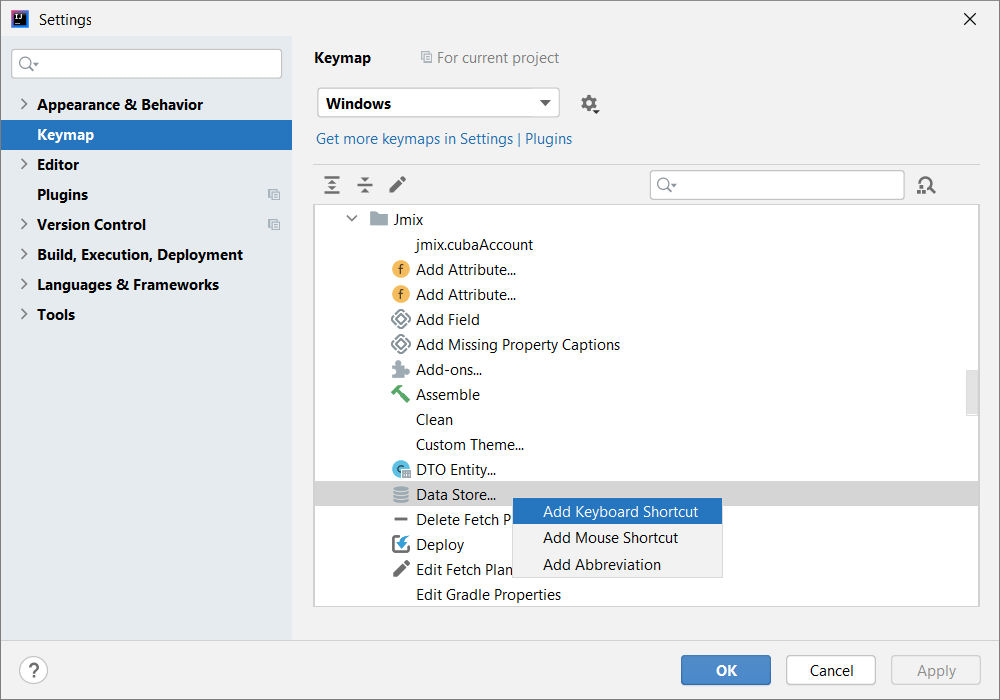
For more details, see IntelliJ IDEA documentation.
